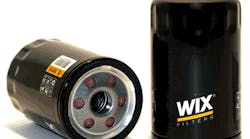Indeed, according to research by WIX Filters, a commercial vehicle’s coolant system is responsible for removing approximately 30% of combustion heat of heavy duty engines – with more than 53% of premature engine failures due to improper maintenance of cooling system components.
Thus, proper understanding of coolant types and adherence to vehicle manufacturer requirements are essential to ensuring that antifreeze effectively maintains engine temperatureand helpsprotect the cooling system from rust and corrosion, WIX’s experts discerned – with the need to follow such protocols only becoming more critical with the advent of stricter emission regulations in 2007 and 2010.
To that end, WX recently developed what the company calls a “Top 10 List” of tips to keep a truck’s engine coolant system in tip top shape. Those are:
Simple stuff, for sure, but it’s often when one overlooks the simple stuff that trucks get into trouble out on the road.





